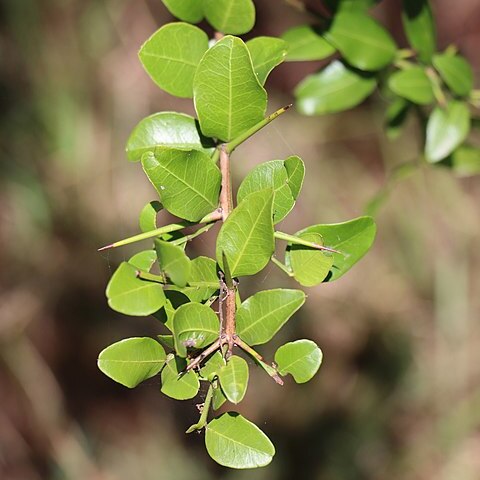Glabrous or nearly glabrous thorny shrubs or small trees, the thorns either straight (New World) or short and recurved (Africa, etc.). Branchlets and leaves opposite or nearly so; petioles short. Flowers 5-merous, in condensed axillary cymes or axillary fascicles or solitary in the axils. Disk lining the cup, rather thin. Ovary 2–3-celled (very rarely 3-merous in Africa); style very short and slightly lobed. Drupe nearly globose, at maturity pulpy and with 2 or 3 seeds each enclosed in the free endocarpous stone which has no evident ventral pore or slit and is never regularly dehiscent.
Leaves usually opposite, oval to oblong, entire or denticulate, glabrous, penninerved; stipules very small, deciduous.
Petals 5, inserted at the back of the margin of the disk, shortly unguiculate, emarginate, cucullate.
Shrubs or lianes, unarmed or armed with straight or hooked axillary spines.
Ovary superior, 2(4)-locular; ovules 1 in each loculus; style 2(4)-lobed.
Seeds 2–4, each surrounded by a thin but tough endocarp.
Fruit an ovoid or subglobose somewhat fleshy drupe.
Inflorescence an axillary fascicle or umbel.
Stamens 5, ± equal in length to the petals.
Disk lining the receptacle.
Receptacle turbinate.
Flowers bisexual.
Sepals 5.

